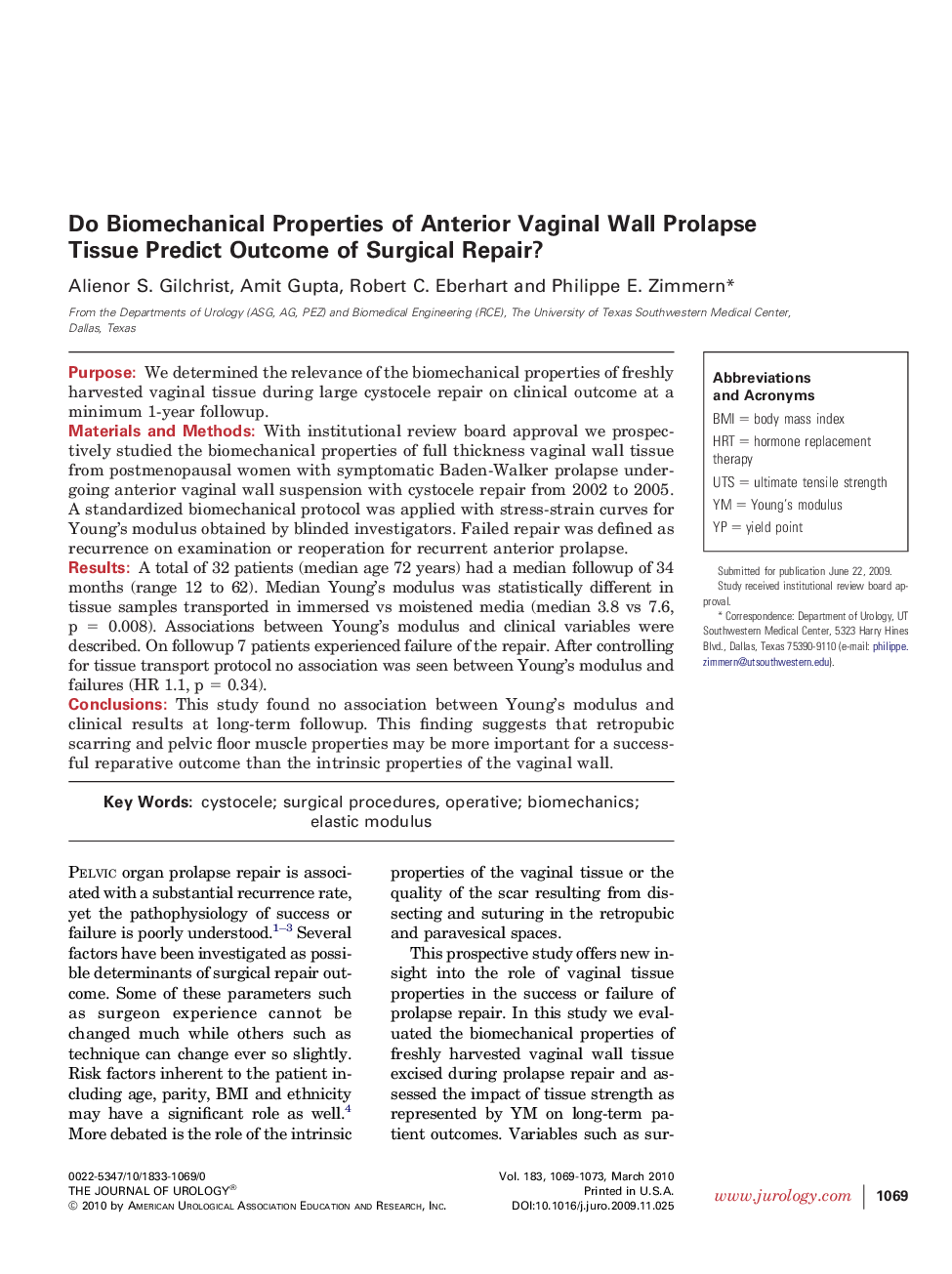| Article ID | Journal | Published Year | Pages | File Type |
|---|---|---|---|---|
| 3874816 | The Journal of Urology | 2010 | 5 Pages |
PurposeWe determined the relevance of the biomechanical properties of freshly harvested vaginal tissue during large cystocele repair on clinical outcome at a minimum 1-year followup.Materials and MethodsWith institutional review board approval we prospectively studied the biomechanical properties of full thickness vaginal wall tissue from postmenopausal women with symptomatic Baden-Walker prolapse undergoing anterior vaginal wall suspension with cystocele repair from 2002 to 2005. A standardized biomechanical protocol was applied with stress-strain curves for Young's modulus obtained by blinded investigators. Failed repair was defined as recurrence on examination or reoperation for recurrent anterior prolapse.ResultsA total of 32 patients (median age 72 years) had a median followup of 34 months (range 12 to 62). Median Young's modulus was statistically different in tissue samples transported in immersed vs moistened media (median 3.8 vs 7.6, p = 0.008). Associations between Young's modulus and clinical variables were described. On followup 7 patients experienced failure of the repair. After controlling for tissue transport protocol no association was seen between Young's modulus and failures (HR 1.1, p = 0.34).ConclusionsThis study found no association between Young's modulus and clinical results at long-term followup. This finding suggests that retropubic scarring and pelvic floor muscle properties may be more important for a successful reparative outcome than the intrinsic properties of the vaginal wall.
